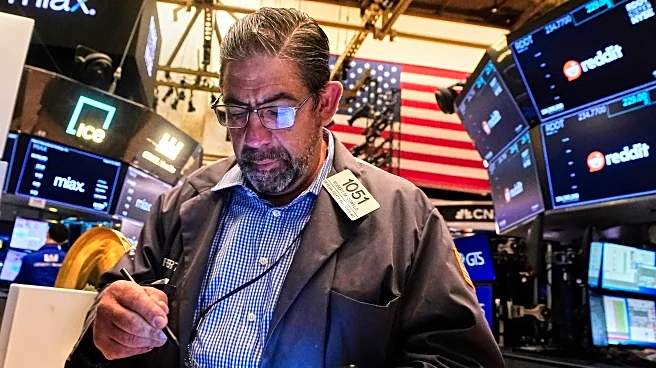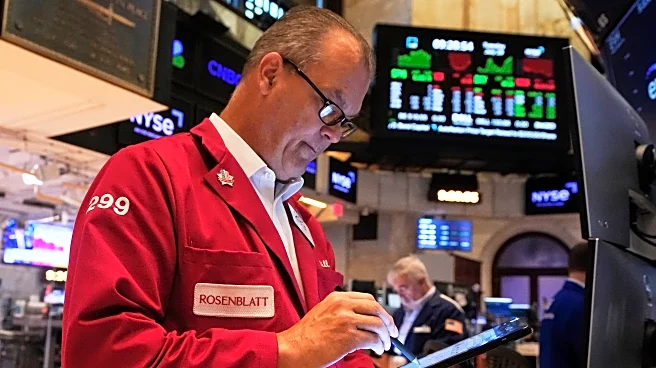What's Happening?
The U.S. stock market experienced fluctuations as investors reacted to new economic data. On August 14, 2025, the Dow Jones Industrial Average closed slightly down by 0.02%, while the S&P 500 managed a marginal gain of 0.03%. The Nasdaq also saw a minor decrease of 0.01%. This volatility was largely driven by a larger-than-expected increase in wholesale prices, as measured by the producer price index, which rose 0.9% in July. This increase surpassed the 0.2% rise anticipated by economists and marked the largest monthly gain since June 2022. The rise in wholesale prices is partly attributed to tariffs, which have been affecting business costs. Additionally, the market is closely watching the Federal Reserve's potential interest rate decisions, with a 92.6% chance of a rate cut in September, according to the CME FedWatch tool. Meanwhile, jobless claims fell to 224,000, indicating a slight improvement in the labor market.
Why It's Important?
The current market volatility highlights the ongoing concerns about inflation and its impact on the U.S. economy. The unexpected rise in wholesale prices suggests that inflation may not be as contained as previously thought, which could influence the Federal Reserve's decision on interest rates. A rate cut could lower borrowing costs, potentially stimulating economic activity, but it also raises concerns about inflationary pressures. Businesses are facing the challenge of managing increased costs due to tariffs, which could lead to higher consumer prices or reduced profit margins. The labor market's performance, as indicated by jobless claims, is another critical factor influencing economic policy decisions. Investors and policymakers are closely monitoring these developments to gauge the health of the economy and make informed decisions.
What's Next?
The Federal Reserve's upcoming meeting in September will be a key event, as it will provide insights into the central bank's approach to managing inflation and supporting the labor market. Market participants will be watching for any signals regarding interest rate adjustments. Additionally, businesses may need to strategize on how to handle rising costs due to tariffs, which could involve passing costs onto consumers or finding ways to absorb them. The ongoing economic data releases, including future job reports and inflation metrics, will continue to shape market expectations and influence investment strategies.













